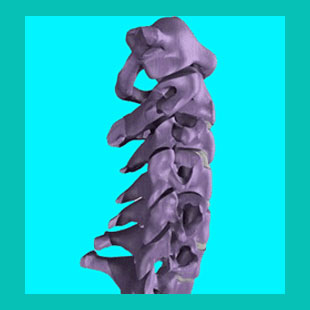
Cervical degenerative disc disease treatment is a huge and profitable industry within the greater orthopedic healthcare sector. There are numerous commonly utilized methods of care within the traditional, complementary and alternative therapy industries.
CDDD is universal and so many patients are diagnosed with having degenerative disc-related pain, even though the condition is mostly a scapegoat for symptoms and not the actual underlying source. However, this truth does not prevent countless doctors, therapists and chiropractors from using completely normal and expected disc degeneration as an excuse to line their bank accounts with cold, hard cash.
Research evidence shows that most treatment for CDDD is not normally needed, nor does it even stand the chance of undoing or reversing the very deterioration that is deemed responsible for creating pain. This is a fact often left unconsidered by patients who pay with money, time, hope and suffering, since the treatments provided are not directed at the actual source of symptoms in most scenarios.
In this critical essay, we explore the reasons for cervical degenerative disc disease treatment, the inconsistencies involved, the actual rare cases where therapy is needed and other less commonly discussed topics of conversation related to cervical disc desiccation.
Cervical Disc Disease Treatment Options
Most degenerative disc disease treatments are both conservative and symptomatic in nature. They are not designed to cure anything (which is good, since there is rarely anything to cure anyway) and only seek to make living with pain easier.
Unfortunately, symptomatic treatment is poor medicine in most cases, unless it is the only option, since a true cure is far preferred. The vast numbers of conservative treatments have no hope of ending CDDD pain, or any type of back or neck pain, regardless of whether the diagnosis is correct or not.
Conservative symptomatic measures include physical therapy, drugs, chiropractic and many other approaches. These modalities will not change the structure of desiccated discs, so they can not and will not cure CDDD. However, many of these care tactics can still prove to be highly effective for providing pain relief, once again demonstrating the diagnostic inaccuracy of most CDDD pronouncements as the symptomatic source.
Treatments with the actual possibility of enacting a cure for CDDD include spinal decompression and degenerative disc disease surgery.
Cervical Degenerative Disc Disease Treatment Issues
Most cases of CDDD are diagnosed based on the Cartesian model of back and neck pain. This states that there must be a structural reason for the pain or else symptoms would not be present. Since CDDD is easy to prove using any form of diagnostic imaging, it is readily available to accept blame as the origin of suffering. Finding disc deterioration on a spinal imaging study saves the doctor from spending too much time on the messy, time-consuming and financially unrewarding process of diagnosis. Instead, these doctors can immediately recommend treatment and get paid.
The pure Cartesian ideology is the most ridiculous and unenlightened philosophy in the healthcare system and is also the main reason for the utter failure of most back and neck pain therapies. After all, if the diagnosis is wrong, how can any treatment prove successful?
Research has conclusively shown that CDDD is seldom problematic and treatments rarely work to resolve it, even when the diagnosis seems sound. This is why we advise diagnosed victims to learn the facts about CDDD before agreeing to any regimen of care, especially those treatments that involve invasive techniques or enduring pharmaceutical poisoning. Remember to logically consider the facts of any treatment that is suggested for CDDD treatment:
What is the treatment designed to do?
Will it be successful in the goal of curing or reversing disc deterioration?
What is the prognosis for treatment and will the doctor commit to their predictions in writing?
Cervical Degenerative Disc Disease Treatment Logic
The cervical spine is going to degenerate. This is normal. We all know this. No one is saying that the physical signs of CDDD do not exist, since they are present in all of us. The point of contention is that these spinal aging processes are not inherently painful and do not create symptoms in virtually every case. Extreme and symptomatic cases of CDDD do exist, but represent the gross minority of diagnosed cases, less than 2% in total.
Degenerative disc disease is just another of the many back and neck pain scapegoats which are diagnosed, yet can rarely be effectively treated. Why do you think back and neck pain enjoy such fearsome reputations? It is surely not the stubbornness of the pain itself, as much as the diagnostic incompetency of care providers in most instances. Remember, that indicated treatment should prove to be effective. Given that virtually all CDDD therapies are ineffective, reverse logical dictates that these prescriptions are not indicated for effectual care of the condition.
For truly symptomatic cases of CDDD, the only logical choices for care are those that will have the chance of resolving the structural aspect of the disc deterioration that is causing the pain. This limits the possibilities to spinal decompression or some forms of invasive surgical intervention.
Herniated Disc > Cervical Degenerative Disc Disease > Cervical Degenerative Disc Disease Treatment





